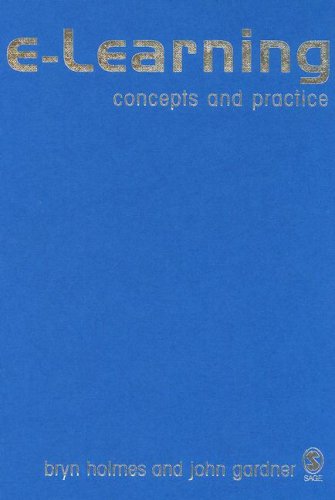

Most ebook files are in PDF format, so you can easily read them using various software such as Foxit Reader or directly on the Google Chrome browser.
Some ebook files are released by publishers in other formats such as .awz, .mobi, .epub, .fb2, etc. You may need to install specific software to read these formats on mobile/PC, such as Calibre.
Please read the tutorial at this link: https://ebookbell.com/faq
We offer FREE conversion to the popular formats you request; however, this may take some time. Therefore, right after payment, please email us, and we will try to provide the service as quickly as possible.
For some exceptional file formats or broken links (if any), please refrain from opening any disputes. Instead, email us first, and we will try to assist within a maximum of 6 hours.
EbookBell Team

0.0
0 reviews

ISBN 10: 1412911117
ISBN 13: 978-1412911115
Author: Bryn Holmes, John Gardner
E-learning is now an essential component of education. Using examples from around the globe, the authors of E-Learning provide an in-depth examination of past and future e-learning approaches, and explore the implications of applying e-learning in practice. Topic include educational evolution; enriching the learning experience; extended learning; empowering learning; evolving theories of learning; emancipatory learning; and the creation of ecommunities
Chapter 1: Introduction
Mission Critical
A Framework of Practice
Bloom's Taxonomy
e-Learning
The Chapters
Chapter 2: Enter e-Learning
Why do We have e-Learning?
e-Learning Defined
Learning for All
e-Learning Resources
Benefits of e-Learning
Challenges and Opportunities
Boom and Bust
Chapter 3: A Potted History of e-Learning
Where has e-Learning Come from?
How did We Get to Where We are?
The Emergence of the Internet
Chapter 4: e-Learning – an Educational Revolution
Access to More Knowledge than Ever before
New Learning Skills for the Twenty-First Century
Maximizing Learning Opportunities through e-Learning
The Emergence of a Society of Lifelong Learners
The Internet Generation
The Implications of Globalization for Cultural Identity
Inclusive Education through e-Learning
Removing Time and Location Limitations
Chapter 5: e-Learning Theory – Communal Constructivism
The Theoretical Underpinning of e-Learning
Behaviourism
Cognitivism
Socio-Constructivism
Communal Constructivism
Types of e-Learning
Seeds of Change
Chapter 6: e-Learning Design – Concepts and Considerations
Role of the Tutor as e-Learning Designer
Instructional Design
Cognitive Apprenticeships
Design Issues for e-Learning
Types of Learning Engagement
Blended Learning
Chapter 7: Empowered Learners – Powerful Tools for Learning
e-Learning Technologies
Early Web Pages – Basic HTML
Then There were Graphics
Usability
Learning Objects and Reusability
Digital Rights and Copyright
New Directions – Ubiquitous Technology and Ambient Learning
Chapter 8: e-Learning – Learner Emancipation
Assistive Technology Issues and Opportunities
Designing for Accessibility
Evaluation of Assistive Technologies
International Initiatives in Accessibility
Building a Supporting Community Network
Chapter 9: e-Learning – Endless Development?
The Education System and Change
Improved Learner-Aware Designs
Blending the Old, the New and the Previously Impractical
Challenges of Assessment for e-Learning
Making Communal Learning Accessible
New Convergences
The Future Web: A ‘Communal Yottaspace’
Semantic Web
Aspirations, Entitlements and Rights
A Final Word
e learning concepts and practice
e learning concepts and practice pdf
microlearning emerging concepts practices and technologies after e learning
what is the concept of e-learning
explain the concept of e learning
Tags: Bryn Holmes, John Gardner, E, Learning, Concepts, Practice